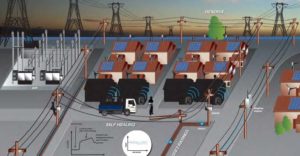
Unison Networks added a Smart Grid Initiative to their Asset Management Plan in 2011 with the goal of leveraging off new technology to improve and expand upon the services it provides to its customers, reduce etwork expenditure and obtain the twelve stated network benefits while creating revenue growth opportunities.
The Smart Grid Initiative has been designed to deliver benefits an order of magnitude greater than the investment required by improving the efficiency of the underlying assets employed. In practical terms this means being able to run assets harder for longer without materially increasing the risk of failure. The initiative will also deliver classes of benefits not currently available as the network becomes more responsive to the demands of the customer.
At the highest level the network benefits offered by the Smart Grid Initiative are:
Unison Networks views smart grid applications as aligning to three areas: EMS technologies, smart metering, and load control (including systems and communications). Unison has developed a strategy for a more aggressive implementation of smart grid applications through the deferment of low risk asset refurbishment that, in turn, releases capital to be spent on the application of smart grid technologies. For example, if a substation transformer is in need of low-risk refurbishment, Unison may defer the refurbishment and fast switching technology will be installed. This results in the same or improved risk profile, as the fast switching allows load to be lifted several times faster avoiding additional transformer degradation.
Unison bases decisions on a return on investment (ROI) calculation. This ROI is computed by capturing available information on costs and benefits using a New Zealand-customised smart grid benefit tool. This tool drives the Unison 5-year asset management plan, with technology trials as part of the approach. However, even with this developed ROI process it is still difficult to understand some aspects of cost, for example the value of lost load in commercial and residential settings. The EA has estimated the value of lost load at about $0.5 million for each region based on a nation-wide assessment. The EA is looking to produce regional estimates using 2010 survey data for from the Automatic Under-Frequency Load Shedding (AUFLS) implementation.


